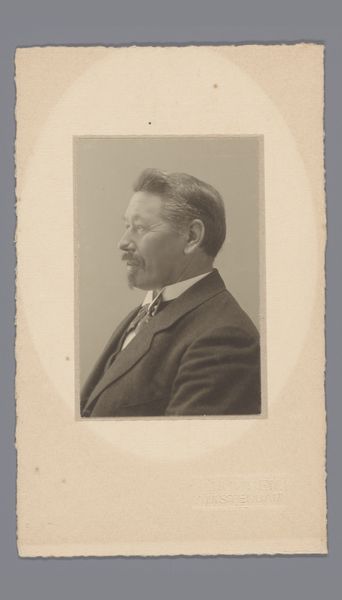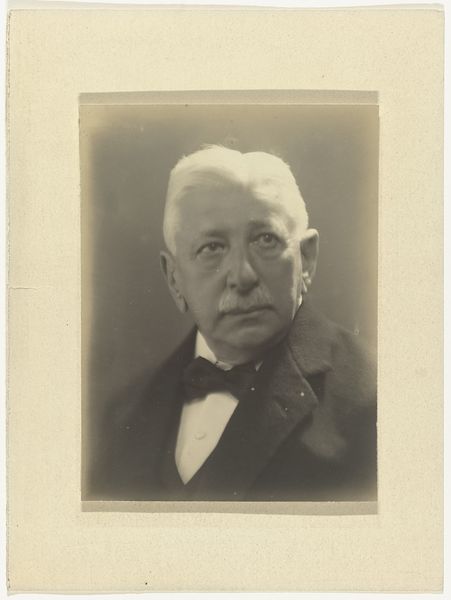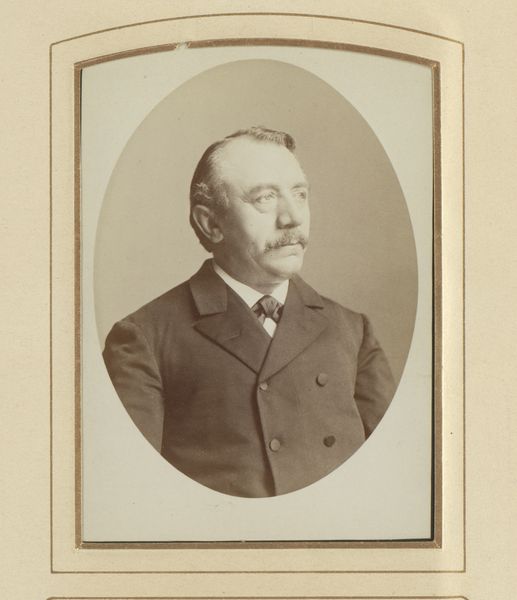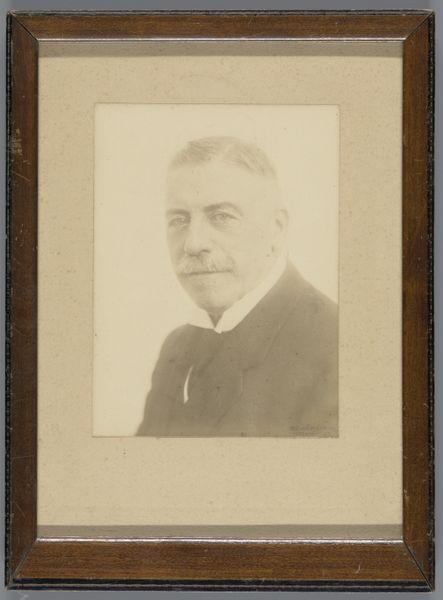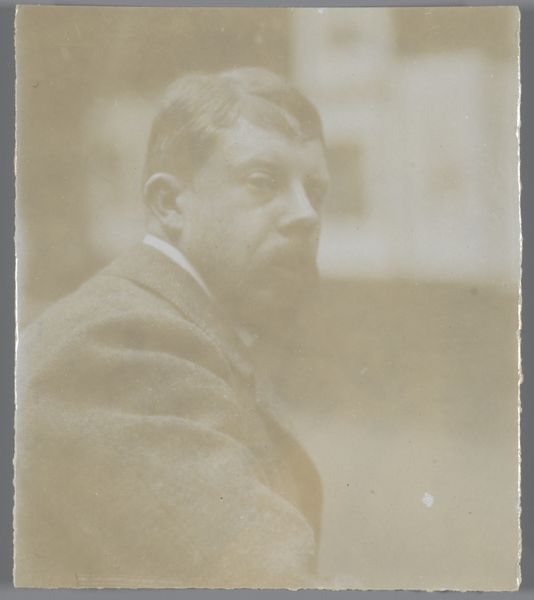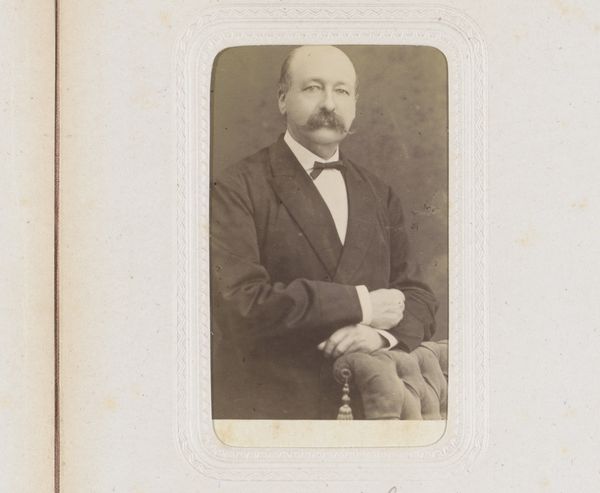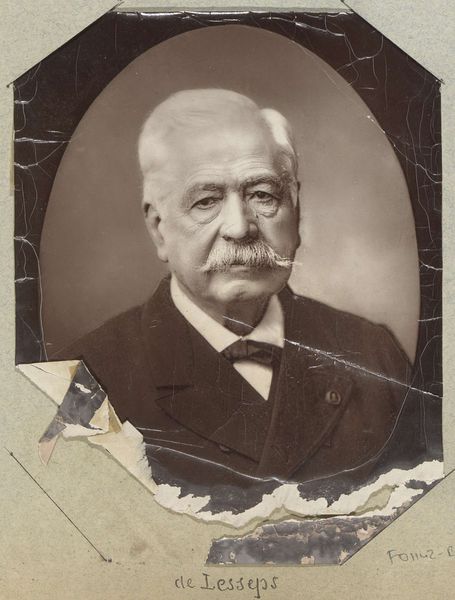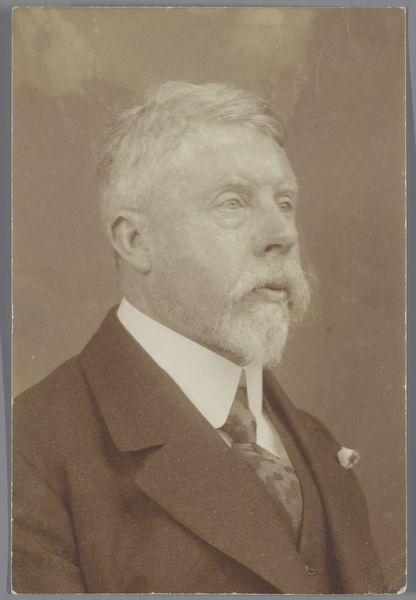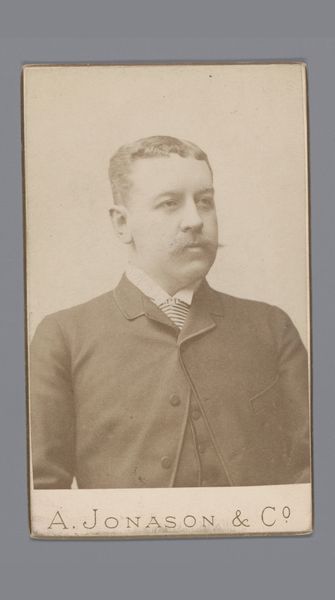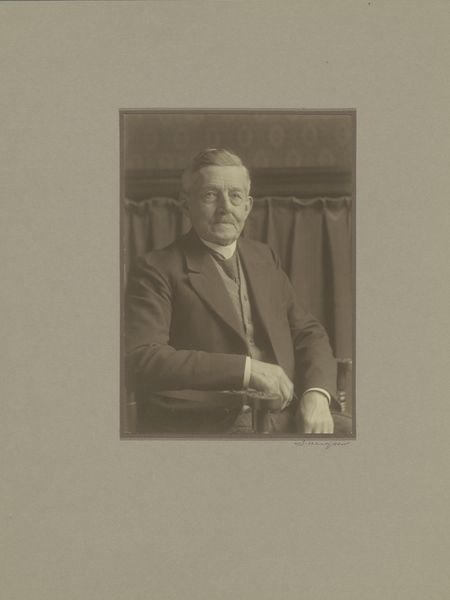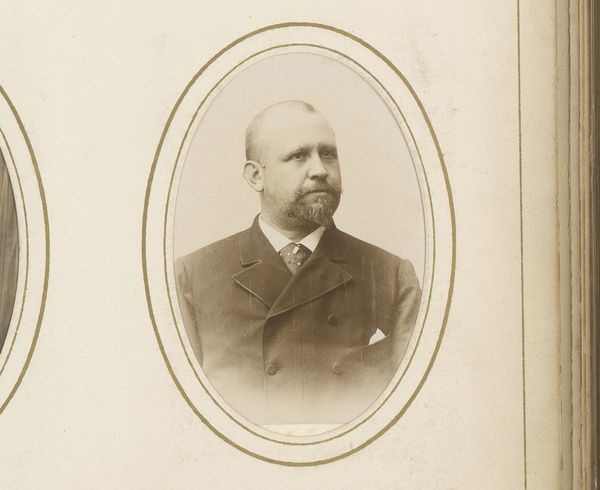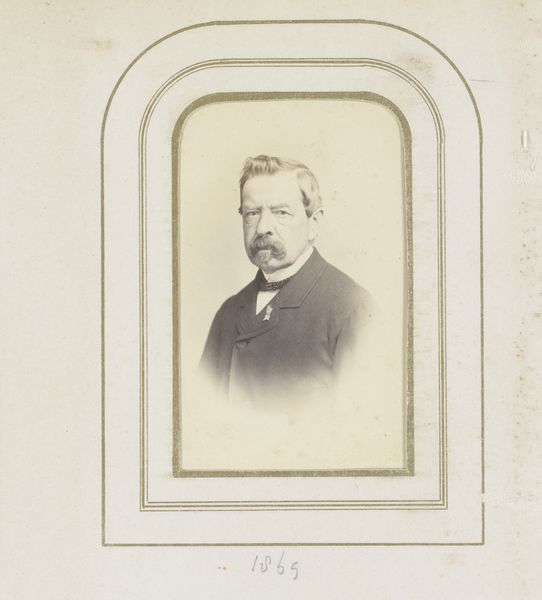
photography, gelatin-silver-print
#
portrait
#
photography
#
historical photography
#
gelatin-silver-print
#
modernism
#
realism
Dimensions: height 105 mm, width 78 mm
Copyright: Rijks Museum: Open Domain
Editor: This is a gelatin silver print, titled "Portret van Joseph Cheetham," created around 1903-1904. The subject's expression seems heavy with thought. What's your take on this portrait? Curator: What strikes me is the quiet dignity conveyed despite what appears to be a working-class background. Think about the historical context: the turn of the century, the rise of industrialism. Photography was becoming more accessible, offering a new means of representation. It granted individuals like Cheetham, who may have been excluded from traditional portraiture due to social status, an opportunity to assert their presence and leave their mark. Editor: So you see this photograph as an act of self-representation? Curator: Precisely. This portrait allows us to consider class identity and representation at a crucial time. Does this challenge previous power structures inherent to art in the turn of the century? The use of realism suggests the sitter had a desire for authenticity. How does this push the boundary of traditional artwork? Editor: It's interesting to think about the choice of gelatin silver print as a conscious decision to represent himself as an ordinary man during that era. Curator: Absolutely! The technique itself embodies the era's democratizing possibilities. It makes you consider how new visual technologies change our understanding of identity. Editor: I'd never considered how the medium and the sitter’s position intersected. It sheds new light on photographic representation! Curator: It speaks to the radical potential of photography in the early 20th century, allowing individuals like Joseph Cheetham to shape their own narrative in an era undergoing monumental social shifts.
Comments
No comments
Be the first to comment and join the conversation on the ultimate creative platform.
